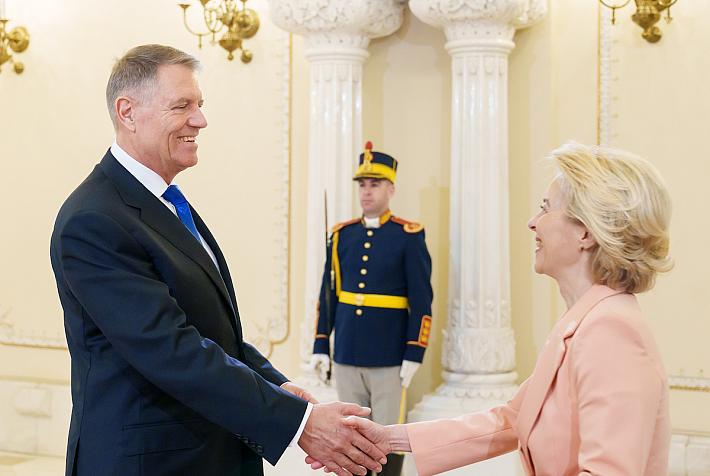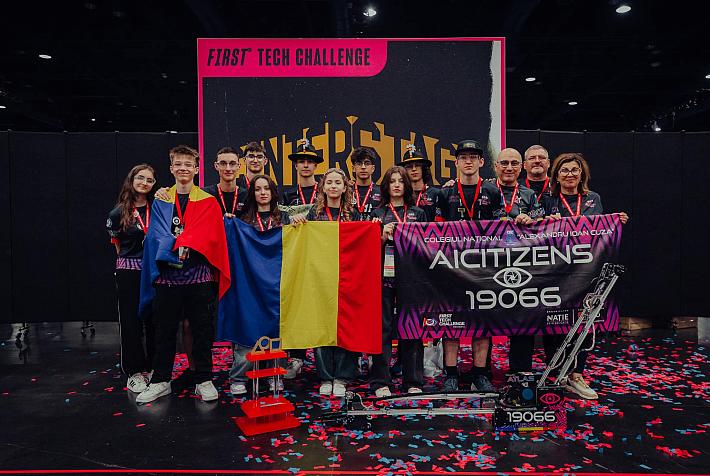Jane’s faith and silence - growing a charity into a family

Driven by faith, a British woman who likes painting and who lives by the sea, helps Romanian children without family support. With some support from Prince Charles and aided by the charity shops opened in Western London, she offers Romanian children a second chance.
Three girls with braided hair, two little boys, and a few adult women stand up and whisper a short prayer before lunch. Then everybody goes louder and normal conversation sets in while everybody starts eating: vegetable soup first, followed by fish with rice and biscuit cake at the end. Jane, the British woman who built the house and has tried in the last 20 years to make this children center feel like home, particularly likes the vegetable soup. “It is carrot?” she asks. “It’s delicious.”
The house where we all eat is called St. Gabriel and it’s the second children center Jane Nicholson founded in Romania in 1998. The first one, the St. Nicolas center, is in Suceava, in northeast Romania and was founded one year earlier. These two places match Jane’s initial idea that abandoned kids shouldn’t grow up in institutions, but in places which resemble families; places where they receive more than a bed and some food. But after a while she realized that some kids are too traumatized and they need more than a family; they need therapy, special care, and permanent supervision. That’s how St.Raphael was born, a center for young people with disabilities. It is also located in Popesti Leordeni, near Bucharest, like the St.Gabriel house, the place where we just finished our biscuit cakes. Two of the girls come near Jane and offer her a Martisor (trinket), as March 1 is approaching. They smile a bit shyly, but when it comes to hugging, they don’t show any reserve and cover her in their embrace. Their small bodies carry such a big love.
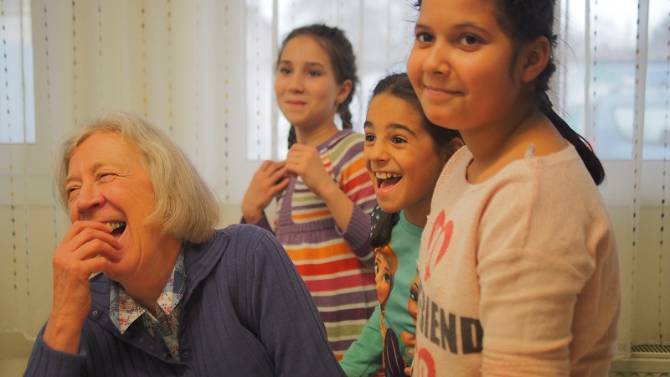

The charity which groups all these houses is called Fara, which means ‘without’ in Romanian. Besides the three places mentioned above, the charity has grown into many other centers with various services across the country. There are therapy day centers, which provide services that you normally have to pay for, such as physical and psychological therapy; centers for young people who came out of state institutions and have no skills. Here they get training for employment and can stay up to a year.
Jane arrived in Romania at the end of February for a few days. In the last 24 years, she has been coming here at least every other month. This time, besides visiting the centers in the north and the Bucharest ones, she also joined a gala where she received a prize called “Initiative for other people”. Wearing a blue dress and holding some flowers, Jane sketches a formal smile for an official photo. She doesn’t like being in front of cameras, nor creating a lot of buzz around her. That’s why she hasn’t focused a lot on promoting the organization in Romania. Instead, she has used the knowledge she had gained from running a million-pound NGO in the UK, before coming to Romania. She has set up Fara charity shops in Western London, and most of their revenues are used to fund the Romania centers.
She even contacted Prince Charles, whom she had already known from her work with the other organization and asked him to be a patron for the Fara Charity. He initially said that he’s got so many charities already and he’s too busy. But Jane insisted: he can’t turn her down. Finally, Prince Charles said yes, and he was the one who suggested that Jane started an organic farm in northern Romania, which could supply the children centers.
Jane would like to shine more light on what the organization does in Romania and attract more local funds. She wants to develop the poverty program, which works with poor families from villages and helps children stay in school. Poverty is the root of all problems, she says.
Jane doesn’t trumpet her organization’s achievements. There's simplicity and modesty in her clothes and in her words. But all that she has managed to build is the result of great determination and intelligence. Faith plays a significant role for this introvert woman: it fueled her work here.
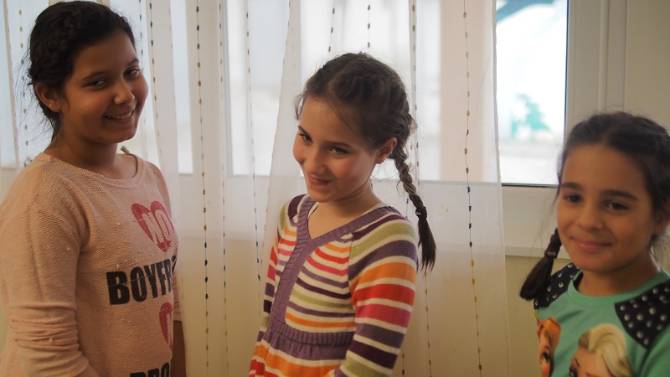
As Jane and I are talking in a room on the first floor of the St. Gabriel house, children voices reach from downstairs. They have their bedrooms on the first floor. As they just returned from school, they hang around with the staff, playing and talking and doing all the normal things kids do. Most of them are in primary school, but two older high school girls also live in the house, in a different room. Children can stay in the center until they finish their studies and manage to become independent. Unlike state institutions, they don’t need to leave when they turn 18. But at St. Raphael, the nearby center, there are kids who will never manage to be independent. Some need permanent supervision.
“All the teaching in schools is about achievement,” Jane says. “Then, what happens is that if you don’t make it, you feel left aside by society. Most children here have difficult backgrounds. They are behind, we do a lot of extra tuition. In the minds of everybody, unless you go to high school and university you’re not worth anything. That’s very difficult. These children will never get to that level, especially the young people with disabilities. People need to realize that they are worth something, they have a contribution to make to life.”
“I don’t have a thing about achievement. These children teach us so much more as well. We have to accept that, in life, something will always happen. Your own child could have a disability. Only if we stopped putting people into categories and stopped wanting that they were perfect...”
Some kids in the centers are very traumatized. “We always have therapy, the staff needs to be gentle. But we also have to accept that we can’t always heal what happened in the past. They live with the best they can.”
Jane doesn't see the wounds of people. “I see them as another human being; and what they deserve are human dignity and an opportunity; they need love. That becomes the anxiety. If you always want to cure people. It’s very tempting. There has to be a mutual relationship.”
The cement fence in the St.Gabriel’s garden has some drawings made by volunteers. Some are drawn by one of Jane’s daughters. Jane herself likes to paint. She had made watercolors for a long time, but after coming to Romania and visiting the monasteries up north, she started painting icons in the Byzantine style.
She lives in the countryside in England, by the sea. “It’s very quiet. We have a farmhouse in the middle of the land, a 17-hundred-century old house. I take walks by the sea. I enjoy that. And then I do my painting, in silence.”
When she paints an icon, it’s more like writing an icon. Jane uses the old techniques, working on gold leaves, with natural pigments from Russia, with temper with egg in.
She likes to be alone and sometimes to go on retreat in monasteries. She does all the work for the charity and other activities involving many people, but she needs individual space. “If you spend a lot of time dedicated to silence, to listening, to God, that is the silent prayer. Out of that silence comes the action.”
She likes the mountains and the ruggedness of the sea - the one she lives nearby can be quite wild. “Beauty is very important in people’s lives. Worst problems are when you live in deprivation and struggling from day to day; even in London, you can be in dreadful areas, just noise, awful flats, there’s no beauty. And everybody needs from time to time the opportunity to engage with something beautiful.”
The rooms where children live have illustrations on the walls - some volunteers made then. Each kid chose the drawing they wanted near their bed. A girl that likes music asked for a musical staff, a kid fond of theater wanted a drawing of theater masks, the little ones asked for Mickey Mouse, Donald Duck, and Goofy. The teenager girls have a drawing of Justin Bieber. Downstairs the volunteers painted an enormous tree with all the four seasons. The kids placed their pictures and the staff’s pictures on the tree to mark their birthdays.
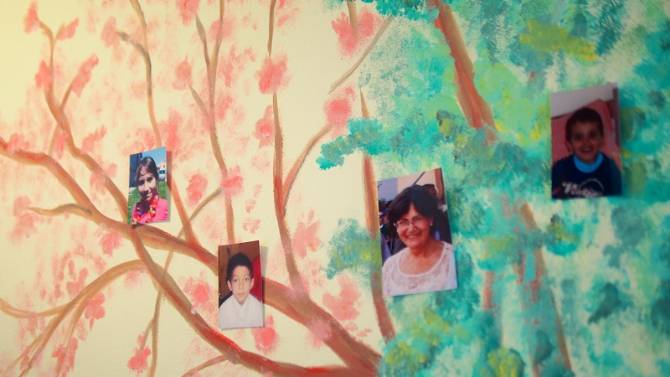
Children also have duties in the house, while the team doesn’t simply stand. They all eat together, as a family, Jane explains. Children call members of the staff mom or dad. While we talk, a little girl - Sorina- slowly opens the door. She hesitates for a moment, then gets inside and says in Romanian “Hai la masa!”. - “Come to lunch!”.
By Diana Mesesan, features writer
(photos by Diana Mesesan)










